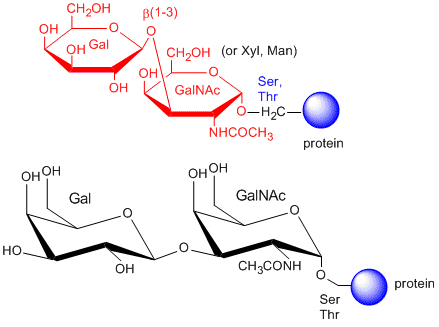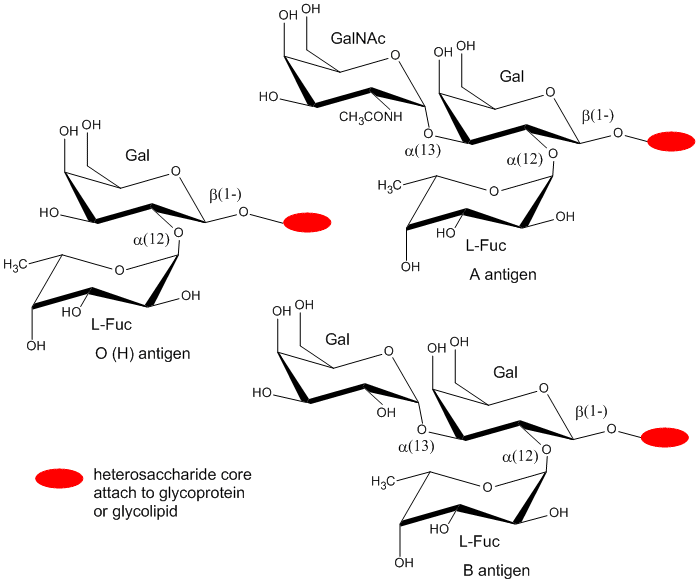Biochemistry Online: An Approach Based on Chemical Logic

CHAPTER 3 - CARBOHYDRATES/GLYCANS
B: More Complex Carbohydrates
03/15/16
|
Learning Goals/Objectives for Chapter 3B: After class and this reading, students will be able to
|
This chapter on complex carbohydrates (glycans/glycoconjugates) will review those features that are deemed especially important for a one semester course dealing with structure and function of biomolecules.
B4. O-linked Glycoproteins
The CHOs are usually attached from a Gal (b 1-3) GalNAc to a Ser or Thr of a protein.
Figure: O-linked Glycoproteins

The blood group antigens (CHOs on cells attached to either proteins or lipids) are examples . The sugars shown as chairs in the figure below are the blood group antigens (in contrast to structures found in many texts). They are attached to a core heterosaccharide (shown as red elipse below) which is connected to either a membrane glycoprotein or glycolipid.
Figure: Blood Group Antigens

Navigation
Return to Chapter 3B: More Complex Carbohydrates Sections
Return to Biochemistry Online Table of Contents
Archived version of full Chapter 3B: More Complex Carbohydrates

Biochemistry Online by Henry Jakubowski is licensed under a Creative Commons Attribution-NonCommercial 4.0 International License.